Herptile Communication (Part 1): Reptiles
I've said it before: Reptiles and amphibians are not the slow, dull species that many people believe them to be. They are vibrant, generally intelligent animals that have proven to be wildly successful for millions of years. Part of this success is due in large part to their ability to communicate with one another (as well as other species). Though we may not witness it or even be aware it is happening, reptiles are constantly speaking to one another in more ways that most people realize.
Vocal communication is perhaps the most obvious form of herptile communication that people can pick up on (understandable seeing as how that's our predominant form of interaction with other people). Many species are capable of a variety of producing a variety of sounds that carry their own specific meaning. Some nocturnal lizards and geckos may "bark" at night, either calling out for nearby mates or during behavioral interactions (such as male competition). Crocodilians are perhaps the most vocal species, producing loud bellows, grunts, growls, hisses, and chirps. These sounds are used to establish their territory and seek out a mate, and baby crocodilians will begin calling even still in the egg for their mother. Some of these vocal cues are subsonic, and cannot be picked up by the human ear, yet their frequency allows these sounds to travel great distances, allowing them to speak long range.
Chemical communication is quite prevalent in species that are not capable of making noises. Snakes and lizards leave chemical cues called pheromones in their wake. These pheromones differ from species to species, and recent research suggests they even differ from one individual animal to the next. These pheromones can be used to attract a mate or establish a territory, and are different enough that some lizards are capable of determining familiar pheromones of lizards they've met (similar to how we remember other people we've met by their facial features). Lizards that communicate via these pheromones often have femoral pores on their hind legs (seen below) and these release the pheromone chemicals. Due to their highly developed olfactory systems, snakes will also pick up on pheromones from other snakes, but because snakes are generally a solitary species, they rarely pursue one another outside of mating season.
Humans can also communicate with one another through tactile communication, a trait that is seen in several reptile species. Lizards will "speak" to each other through touch by nudging, licking, biting or even bumping other lizards. These behaviors may be associated with either courtship or during aggression, typically male on male interations during mating season. Because tactile communication requires two individuals to be in extremely close proximity (basically arms-reach away), these species typically rely on other forms of communication, and typically resort to tactile communication only when other methods have failed. Some species, like the komodo dragon, will even lick one another to determine if their potential mate is sexually receptive. Chameleons take tactile communication a step further by vibrating the branch or leaf they are standing on (a subclass of tactile communication called "vibrational communication"). Alligators, when creating subsonic calls, may vibrate the water along their back, passing a pulse through the water. Reptiles that communicate via vibrations have unique adaptations to their morphology that include slight changes in their ear or jaw structure, in order to pick up on these signals. Though we still don't fully understand how turtles communicate, we do know that many species of pond turtles engage in tactile behavior. Males of these species have longer claws than the females; during mating season, that male will swim above the female, waving his long claws in her face and occasionally tapping her head.
Visual communication allows reptiles to talk to one another as long as they remain within visual range. Just as humans display a variety of facial expressions to communicate, many species of reptiles will use similar cues to convey everything from their mood to their place in the hierarchy. Colors play a huge role in these displays: some male lizards have colorful bellies that, while otherwise hidden from view, are exposed in a behavior called ventral flattening, when the lizard shows off these vibrant colors during social interactions. Color change is present in a variety of species, that most widely known is that of the chameleon. Contrary to popular belief, these lizards do not change color to match their surroundings, rather the change is due to their mood. These displays may tell other lizards when an individual is agitated, scared or calm. Some communications structures remain hidden from view until the reptile "speaks": Dewlaps (pictured below) are colored fan-like structures on the throat that are extended during mating season, both for attracting a mate and dueling rival suitors.
Many physical gestures contribute to visual communication. Some species of lizards are known to wave to one another, and dominance displays are often settled by head-bobbing or push-up contests. Displays like these are often critical as they may resolve duels or negative interactions before they have the chance to become violent.
Communication can also be used between species. Snakes have some visual and auditory behaviors that they use as a warning (especially to humans) when they feel threatened. Rattlesnakes are well known for their tell-tale rattle, a warning sound that tells any potential predators to watch their step. Species like the cottonmouth (water moccasin) open their mouth wide, displaying the white interior to say "Don't mess with me, back off".
Just like human communication, reptiles communicate in a variety of ways, usually some combination of the methods above. These gestures can be used to determine mating intentions, deter predators, convey feelings or mood, or even settle conflicts before they get nasty. Reptiles are very much like people, and their ability to communicate is very reminiscent of our own. So next time you see a reptile outside, watch it for a little bit and see if you can't pick up on some faint communication!
(Part 2 on amphibians will be up soon!)
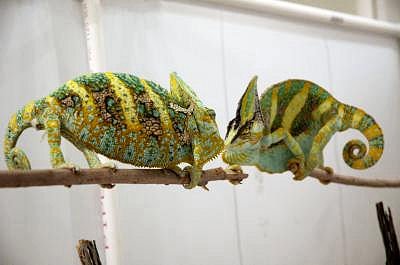
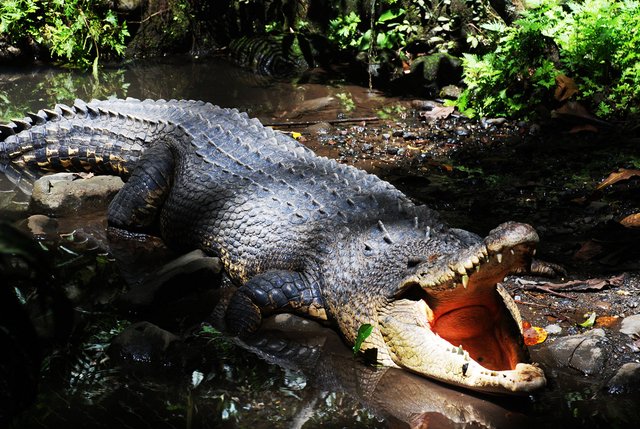
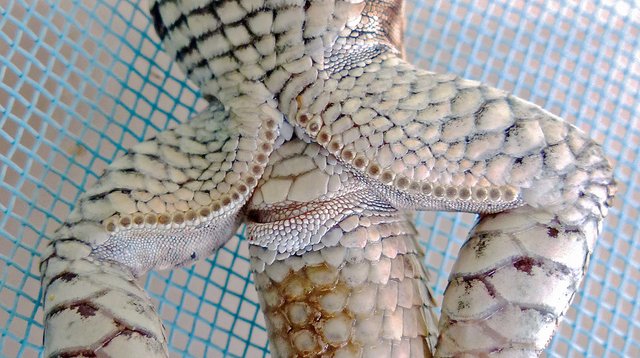

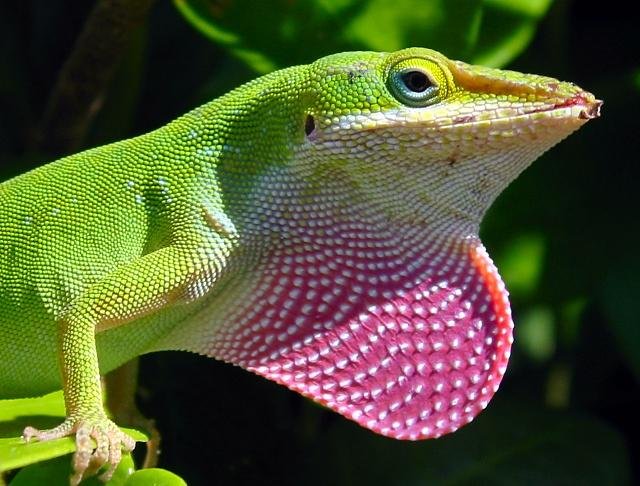
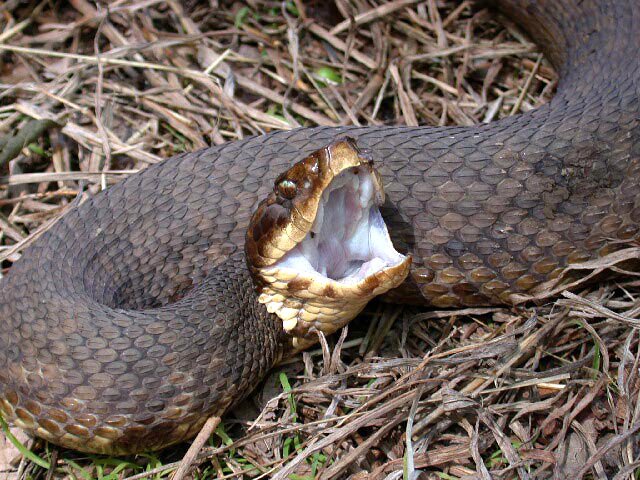
Like your article, very informative! Feel free to use my photos if you find any which fit the story.
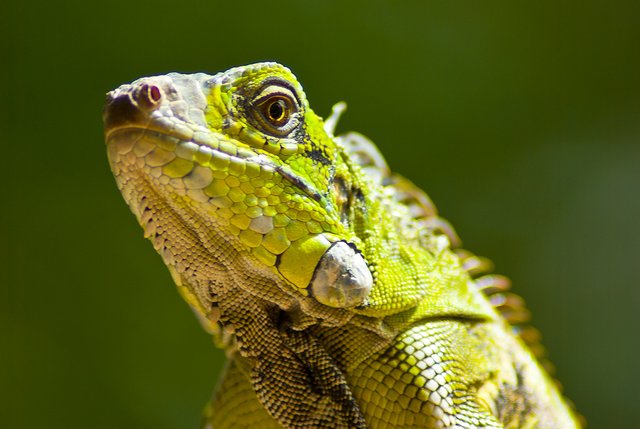
I'm looking forward to reading your next article .
Really great article, thanks for sharing! -upvoted & followed
what an incredible informative post - enjoyed reading again - thanks for the share
So . . . . it this a good idea or a really bad one?
https://steemit.com/howto/@papa-pepper/finally-the-how-to-video-you-ve-all-been-waiting-for-how-to-grab-a-snapping-turtle-by-the-throat
For recreational purposes, I wouldn't recommend it...but it's not a bad idea for experienced people when catching turtles for food or to move them to another location. I did commend him for mentioning that pulling on their tails is terrible for their spines (something that tv programs always seem to show). I'd say it's fine as long as the person really knows what they're doing (but i wouldn't necessarily recommend it to the average Joe).
Really, I'm in full support of just about anything that doesn't result in killing or hurting the animal. That turtle doesn't seem too upset (at least not more than any other snapping turtle xD).
Thanks for sharing these pieces of information (and am looking forward to read part 2). I have learned a lot.
I will try to look more carefully the next time I will watch reptiles :)
I like the last picture. it seems to be saying hi and bye lol
This post has been linked to from another place on Steem.
About linkback bot. Please upvote if you like the bot and want to support its development.